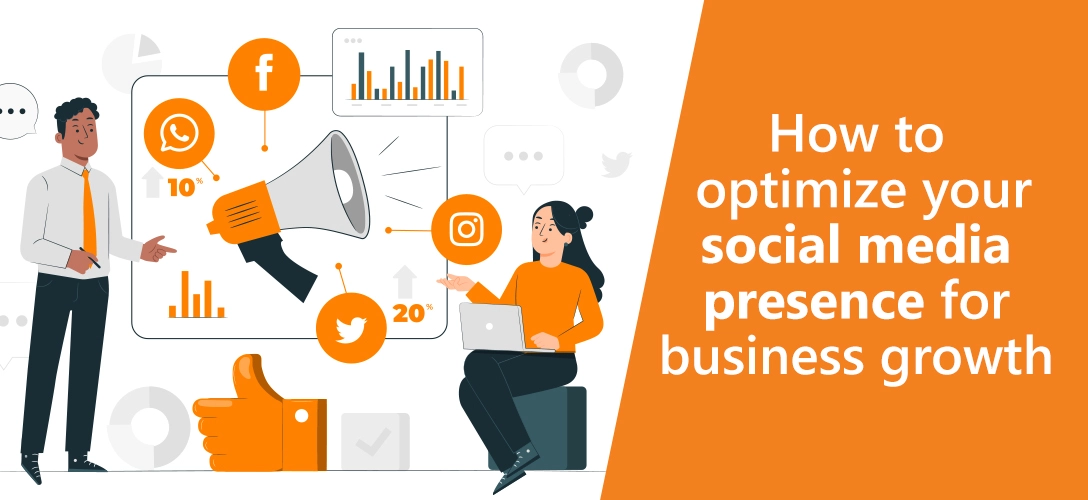Introduction
In today’s digital economy, social media is more than just a networking tool; it’s an essential component of any business strategy. From reaching new customers to engaging with loyal followers, social media creates opportunities for growth that were once limited to traditional advertising. This guide offers valuable insights and actionable strategies for optimizing your social media presence to achieve sustainable business growth.
What is Social Media Optimization?
Social Media Optimization (SMO) involves using social platforms strategically to increase brand visibility, build engagement, and attract new customers. Through SMO, businesses can ensure that their online presence is not only engaging but also optimized for search engines, making it easier for potential customers to discover their brand. In the current landscape, SMO has become vital due to the high competition and growing preference of consumers to engage with brands digitally.
SMO allows businesses to maximize the impact of each social interaction, streamline their marketing efforts, and track engagement for better returns on investment.
Role of Social Media
Social media plays a significant role in modern business. Its importance spans multiple areas:
-
Customer Engagement: Social media enables real-time interactions with audiences, building relationships and encouraging brand loyalty.
-
Brand Awareness: With billions of users, platforms like Instagram, Facebook, and LinkedIn allow brands to expand their reach and gain exposure.
-
Lead Generation: Social media channels provide direct ways to capture leads through ads, gated content, and engagement-driven posts.
-
Customer Service: Platforms are an effective means for managing customer inquiries, complaints, and feedback, enhancing overall brand reputation.
According to research, over 70% of consumers expect businesses to have a social media presence, highlighting its critical role in both customer service and engagement.
Types of Social Media Marketing
There are several types of social media marketing, each with unique benefits:
-
Organic Social Media Marketing: Involves posting content without paid promotion, building an authentic connection with audiences.
-
Paid Social Media Advertising: Paid ads help target specific demographics, enhancing reach and engagement.
-
Influencer Marketing: Collaborating with influencers allows brands to reach niche audiences, boosting credibility and exposure.
-
Content Marketing: Through engaging content such as blogs, videos, and infographics, brands provide value, educate, and establish authority.
-
Social Media Analytics: Analyzing performance metrics enables brands to adjust strategies and improve overall effectiveness.
Each type serves a purpose, whether it's enhancing organic reach or improving ROI on social campaigns.
Advantages of Social Media Optimization
Optimizing social media has numerous benefits, including:
-
Increased Online Visibility: SMO helps your brand become more discoverable, attracting new followers and potential customers.
-
Improved Brand Credibility: Consistent engagement and valuable content improve trust and authority in your field.
-
Enhanced Customer Engagement: SMO strategies drive meaningful interactions, which helps build a loyal community.
-
Better ROI: Optimized social media efforts provide better returns as more audiences engage and convert.
-
Competitive Advantage: Businesses that effectively optimize social media stand out in competitive markets.
For example, a small brand’s regular use of Instagram Stories with product demonstrations led to a 30% increase in sales, showcasing the ROI potential of social media optimization.
How to Optimize Your Social Media Presence?
To optimize your social media presence, consider the following strategies:
-
Complete and Consistent Profiles: Ensure each profile is complete, visually balanced, and aligned with your brand’s messaging.
-
Content Strategy and Calendar: Create a well-planned content calendar, balancing promotional posts with educational and entertaining content.
-
Engagement and Community Building: Actively respond to comments, engage in conversations, and make your followers feel valued.
-
Analytics and Tracking: Use tools to measure performance across channels, identify what works, and fine-tune your approach.
-
Advertising and Sponsored Content: Use targeted ads to reach specific audiences. Promoted posts and sponsored content can help amplify reach and attract new followers.
Regularly updating these strategies based on insights will help maintain a strong, adaptable social presence.

